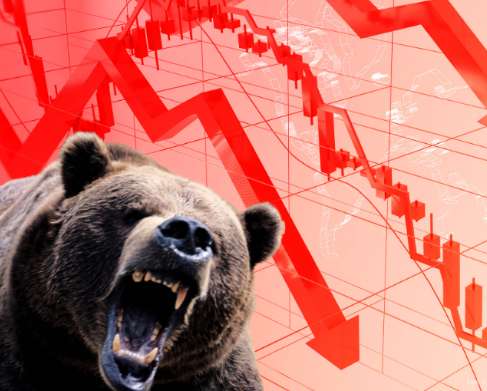Hedge Funds May Be The True Culprit In The Recent Stock Market Selloff
JPMorgan's research found that the current round of sell-offs in U.S. stocks has largely been driven by hedge funds- particularly equity-focused hedge funds- significantly reducing their risk exposure

JPMorgan's research found that the current round of sell-offs in U.S. stocks has largely been driven by hedge funds- particularly equity-focused hedge funds- significantly reducing their risk exposure. In contrast, there is little evidence of large-scale selling by foreign investors, and U.S. retail investors continue to buy stocks.
The firm's analyst Nikolaos Panigirtzoglou pointed out in the latest report that net outflows of foreign capital from U.S. stocks do not necessarily imply negative returns or underperformance relative to non-U.S. stocks, especially when domestic investors, particularly retail investors, continue to buy. At the same time, the future trajectory of the U.S. stock market will largely depend on whether the U.S. actually enters an economic recession.
Hedge Funds Are THE Factor Behind the U.S. Stock Sell-Off
JPMorgan's latest report highlights a key issue- the adjustment in U.S. stocks since mid-February and their underperformance relative to other global markets has raised questions about "who is selling U.S. stocks" and "whether foreign capital is withdrawing." The report cites data showing little evidence of large-scale foreign selling of U.S. stocks or bonds.
According to the U.S. Treasury International Capital (TIC) data, foreign investors bought approximately $24 billion in U.S. stocks in February, far exceeding $13 billion outflow in January, while foreign investors also purchased around $120 billion in U.S. treasuries. Data from Japan also show that after a modest net sell-off of $5 billion in February, Japanese investors bought $13 billion and $14 billion in foreign stocks in March and early April, respectively.
Therefore, J.P. Morgan analysts believe most of the selling in U.S. stocks this year has been driven by equity-focused hedge funds, including quantitative and discretionary equity long-short funds.
JPMorgan estimates that these investors have sold approximately $759 billion in stocks thus far, while another key driver has been momentum following hedge funds, such as ctas, which have been unwinding their long positions hold since mid February and shifting to short positions by early April, with estimated sales of around $450 billion.
Additionally, short interest in S&P 500 ETFs has risen significantly since the beginning of 2025, and short interest in smaller companies within the S&P index has also increased markedly, indicating that hedge funds have played a pivotal role in the U.S. stock market adjustment.
Foreign Capital Inflows Have Been Volatile, Retail Investors Are the Key Pillar Supporting U.S. Stocks
In contrast to hedge funds, U.S. retail investors continue to buy U.S. stock ETFs, with monthly net purchases remaining steady at around $50 billion, showing little interruption. However, relative to assets under management (AUM), the biggest buying impact this year has been in European equity ETFs (13% of AUM) and gold ETFs (18% of AUM).
JPMorgan's report points out that the sustained buying by retail investors is a crucial support factor for the U.S. stock market.
Historically, as the U.S. dollar is the world's primary reserve currency, foreign investors have long channeled their savings into the U.S., and their share of holdings in U.S. corporate stocks has been rising. However, foreign capital inflows have been quite volatile, with outflows occurring in 2013, 2015-2016, 2019, and 2021/22. The analysts emphasized that even if international investors begin selling U.S. stocks, as long as domestic investors- especially retail investors- continue buying, this alone does not imply underperformance by U.S. stocks.
Based on data from the past decade or so, the average outflow of foreign capital from U.S. stocks has been about 0.3% of outstanding shares or 0.7% of U.S. GDP, equivalent to roughly $200 billion to $300 billion.
Disclaimer: The views in this article are from the original Creator and do not represent the views or position of Hawk Insight. The content of the article is for reference, communication and learning only, and does not constitute investment advice. If it involves copyright issues, please contact us for deletion.